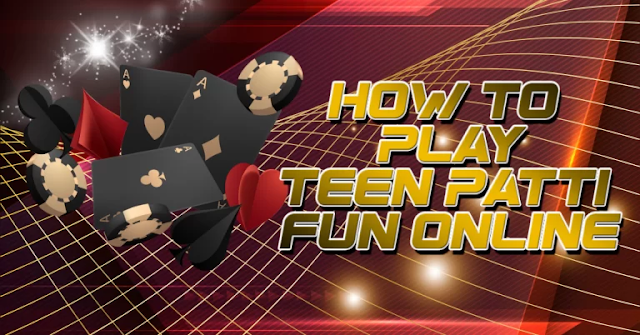What Are The Teen Patti Rules? Used Regularly in Hobigames
Want to learn how to play Teen Patti, a popular card game in India?
Have no fear. There is a full set of Teen Patti Rules in this article.
One of the most well-known card games in India is Teen Patti, a variation of the traditional Indian card game of Poker. Continue your research into Teen Patti India in an effort to learn the rules and strategies of the game.
This card game gained instant popularity in India and quickly spread across the rest of South Asia. Flash or flush is a variant of the card game Poker played with only three cards.
Learn How to Play Teen Patti Game and the Rules
Desi card game Teen Patti is played with a standard 52-card deck with three to six players. Teen Patti India, like other Poker and rummy games, has a token placement phase. It is important that all players agree on a quantity before the cards are dealt that they are willing to put up a particular token.
In this game, after each player has put a token and the total has been tallied, they are then dealt three cards face down. The initial supply of tokens, known as the boot sum, is used to begin betting. The kettle has been set out on the counter.
After each player and the sellers have received three cards, the next action is to either call or raise. You should be familiar with these terms if you've ever played Poker, a popular card game in India. In poker, a call means you'll continue in the hand but won't be putting any more chips into the pot, whereas a raise means you'll be adding chips to the pot and increasing the stakes.
Anyhow, keep in mind that Teen Patti, a common Desi card game in India, is not the same as Poker. If a player sets two coins and another player inserts four, the first player must add four coins to the earlier two in order to maintain parity in the Teen Patti app.
The player who remains in the hand to the end with the highest ranking hand wins the growing pot at the end of the game. The decision is made by ranking the cards from most to least relevant.
Hand Ranks: 3 Patti Rules, A Popular Desi Card Game India
Teen Patti is a popular card game in India, and in order to win at it online, you need to have a better hand than your opponents. In the card game 3 Patti, the hands (sometimes called sequences) are ranked from best to worst as follows:
Trail Rr Set (three of the same rank)
In Teen Patti, you can make a trail, set, or trio out of any three cards of the same sort, regardless of color or suit. For instance, the highest possible hand consists of three aces, one club, one diamond, and one heart, forming a trail.
Three aces of the same suit (hearts, clubs, or diamonds) add up to the same hand rank. The rest of the cards (Kings, Aces, Kings, Jacks, Tens, and Aces) tie for second and third place. Those with a score of 2-2-2 are at the bottom of the list.
Pure Sequence Or The Straight Flush
The 'pakki round' refers to the sequence of three Patti hands used in the Indian card game Teen Patti. A straight flush is a hand that has three cards all of the same suit in a row. In the classic game, an A-2-3 of hearts, diamonds, spades, or clubs is the best possible ranked hand in a pure sequence.
On the other hand, the letters A-K-Q are often considered the most prestigious. At the conclusion of the list, 4-3-2 is ranked last. In case you hadn't noticed, pure sequences of the form 2-A-K and K-A-2 are both invalid.
Sequence (straight or run)
A run or straight sequence in Teen Patti is played similarly to a pure sequence. The hand consists of three consecutive cards of varying suits. Similar to the classic version, a hand of A-2-3 is the best possible result.
Contrarily, after the tweak, the sequence becomes A-K-Q. The 4-3-2 hand is the worst in the sequence. Straight sequences like 2-A-K and K-A-2 are obviously impossible.
Color
A color or flush in Teen Patti refers to a hand consisting of three cards of the same suit, regardless of their order. The greatest possible hand in this sequence is spades, clubs, diamonds, or hearts A-K-J, followed by spades A-K-10, diamonds A-K-9, and so on. The color or flush sequence of 5-3-2 is the weakest possible hand.
Pair (two cards of the same rank)
Any two cards of the same rank in Teen Patti might be considered a pair, or double. For Patti, a pair of Aces of any color or suit is the best possible hand. When two or more players are dealt a pair of identical cards, the highest or lowest value of the odd card determines the winner.
A-A-K is the best possible sequence, whereas 2-2-3 is the worst.
High Card
The high card that Patti, at age 19, was dealt looks like a flush. The hand is made up of three random cards of different suits. A-K-J is the finest possible hand, and 5-3-2 is the worst. If two players have the same high card, the higher hand is determined by the next highest card.
Start The Game
Watch this video to get the basics of Teen Patti down before we dive into the nitty-gritty of the game.
Rounds Of Gaming
Chaal is a well-known card game in India, and you have the option of playing it either visually (by inspecting the cards) or secretly (by placing your token in the dark) (not seeing the cards).
You must be at least the ante when playing blind, but no more than double the ante. If the ante is 15, for instance, you must wager at least 15 tokens to play. There is a 30-token cap on wagers.
It takes twice as much money as blind players are willing to risk in order to keep playing chaal, a popular card game in India. But don't bet more than four times the total!
In this round of the classic Indian card game, these rules apply permanently.
At this point, every time you put a token down, you have the option to either call or raise:
The price of a call is equal to the sum of the largest tokens from each round times the total number of rounds played.
In a raise, one player's token total increases by an amount greater than that of any other player. In a game of chaal, you may only place four of the highest-value token. While playing blind, you are limited to playing only twice as many of the highest tokens.
The gameplay will continue until one of the following occurs:
The other players had all conceded defeat. Only you can win the full pot if no one else folds.
All but two of the players in the hand fold. When there are just three players left, one of them can call for a show. In this case, both players must reveal their hands and compare their cards. One who has the highest ranking hand is declared the victor.
The Show
When everyone else has folded and there are only two players left, one of them may demand a showdown. If this happens, it's time for both players to show their hands. The guidelines for this program are as follows:
When there are only two contestants left, the show begins.
Only one more show will be performed unless there are only two players left. Each must now wager double the current sum.
Nobody, not even the dealers, may look at their cards before they've paid for the show.
Each of the last two players may call for a show if they so want. Each of them will double the token price.
Any player can be asked to perform for a blind player.
To double the current token's value, the blind token must be worth 2 of them. Betting requirements are doubled for Blind players.
A show cannot be requested by a player who is blind. The player may either participate or withdraw from the game.
When the show begins, the cards of both players are exposed. The person with the best five-card hand wins the pot.
If both players have identical hands, the one who bought the show loses.
The winner will act as a dealer for the next hand.
Compromise
When playing Chaal, you can also try to negotiate a compromise, often known as a sideshow. The steps to a successful negotiation are as follows:
An initial bet of at least a minimum amount is required of all players (Ante).
When it's your turn to put a token, you can negotiate a trade with the player who placed before you (the person to your left). However, this is only possible if the player in front of you is also playing Chaal.
The current amount from the player before you would be the finest choice to place.
The other party can choose whether or not to accept the concession.
To see if the other player has accepted the compromise, you must both look at your cards. When a player has a weak hand, he or she must fold. If both players have equal cards, the one who asked for a compromise should give up.
The turn is passed to the next player if the proposed compromise is not accepted by the other player.
Variations of Teen Patti are played according to their own set of rules.
Teen Patti, a widely played card game in India, is banned from this website due to the restrictions described below. On the other side, there are numerous variations of the 3 Patti game.
Different games have slightly different rules. In order to play our version of Teen Patti, a popular card game in India, you must meet certain requirements.
in India, are you prepared to play Teen Patti? Immediately get the 3 Patti Game App on your mobile device.
Check out our website Hobigames if you want to learn and discover more things about this.



Mga Komento
Mag-post ng isang Komento